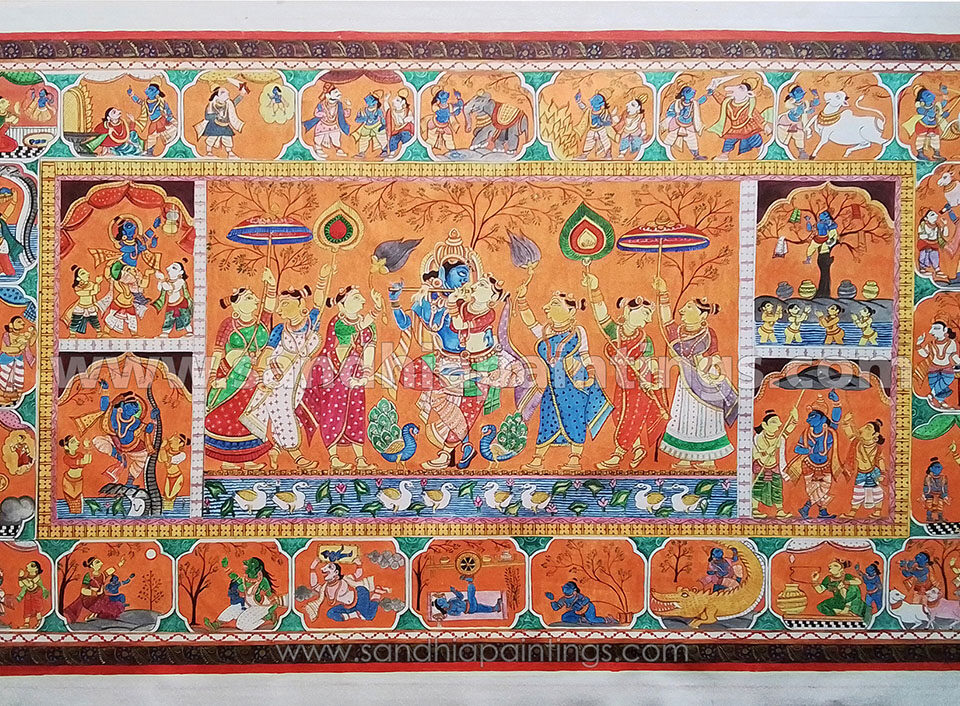According to legend, Madhubani paintings were first created at Mithila, the birthplace of Hindu goddess Sita. When Sita and her husband Prince Rama were to be married, King Janak, father to Sita, asked for paintings to capture moments of the marriage. Madhubani painting (or Mithila painting) was traditionally created by the women of various communities in the Mithila region of the Indian subcontinents. It originated from Madhubani district of the Mithila region of Bihar. Madhubani is also a major export center of these paintings. This painting as a form of wall art was practiced widely throughout the region; the more recent development of painting on paper and canvas mainly originated among the villages around Madhubani, and it is these latter developments that led to the term "Madhubani art" being used alongside "Mithila Painting.
The paintings were traditionally done on freshly plastered mud walls and floors of huts, but now they are also done on cloth, handmade paper and canvas.[3] Madhubani paintings are made from the paste of powdered rice. Madhubani painting has remained confined to a compact geographical area and the skills have been passed on through centuries, the content and the style have largely remained the same. Thus, Madhubani painting has received GI (Geographical Indication) status. Madhubani paintings use two-dimensional imagery, and the colors used are derived from plants. Ochre, Lampblack and Red are used for reddish-brown and black, respectively.

